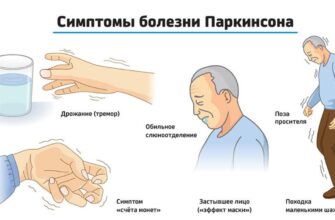Frostbite, an age-old adversary of humanity, continues to claim limbs and lives, turning harsh winters into periods of peril. Yet, a glimmer of hope now shines from Belgorod, Russia, where scientists have unveiled a promising new approach that could dramatically change how we treat severe cold injuries, significantly reducing the agonizing need for amputations.
The Chilling Reality of Frostbite
It seems that even in an age of advanced medical marvels, some of the oldest adversaries, like the unforgiving cold, continue to present formidable challenges. Frostbite, far from being a mere inconvenience, is a brutal injury. It`s not just about feeling numb; it`s about compromised blood flow leading to tissue death. Annually, between 30% and 60% of patients suffering from deep frostbite endure the life-altering consequence of amputation, a stark reminder of the current limitations in treatment.
The process of frostbite is a cruel irony: when extremities are exposed to extreme cold, tiny blood vessels constrict in a desperate attempt to preserve core body temperature. This leads to significantly reduced blood flow, starving tissues of oxygen and nutrients. Upon rewarming, the demand for blood and oxygen in the affected tissues surges, but the damaged vessels often cannot cope, leading to a “vicious cycle.” As Darya Kostina, Associate Professor at Belgorod State University`s Department of Pharmacology and Clinical Pharmacology, explains, this results in:
- Hypoxia: Tissues are deprived of essential oxygen.
- Thrombosis: Blood clots form, further blocking circulation.
- Tissue Death: Cells begin to die, leading to irreversible damage.
Breaking this cycle by rapidly restoring normal microcirculation in the early stages of a cold injury is absolutely critical to minimize long-term damage and prevent the devastating need for surgical removal of affected body parts.
A Novel Approach: Gene Therapy to the Rescue
Scientists at the Belgorod State National Research University (NIU BelSU) have engineered a groundbreaking solution. They`ve identified a gene therapy drug based on plasmid pCMV-VEGF165 as a highly effective means to restore microcirculation and accelerate healing in frostbitten limbs. This innovative preparation is specifically designed to stimulate the formation of new blood vessels, thereby revitalizing the compromised blood supply to the affected extremities.
The beauty of this approach lies in its precision. Instead of merely addressing symptoms, it targets the fundamental vascular damage caused by frostbite, essentially teaching the body to repair itself by growing new pathways for blood flow. It’s a sophisticated biological nudge, leveraging the body’s own restorative capabilities.
Promising Results from Pre-Clinical Trials
The efficacy of plasmid pCMV-VEGF165 has been rigorously tested in laboratory animal models. The results, recently published in the scientific journal `Safety and Risk of Pharmacotherapy`, are nothing short of impressive:
Just one week into the treatment, tissue regeneration in the cold-injured areas showed an average improvement of 47%, a stark contrast to the 29% observed in the control group. This accelerated rate of tissue regeneration persisted for more than ten days, indicating a robust and sustained healing effect.
These findings suggest a significant leap forward. A faster, more complete regeneration translates directly into less tissue necrosis, reduced severity of injury, and, crucially, a higher probability of saving the affected limb from amputation. The potential impact on patients` quality of life is immeasurable.
The Road Ahead: Clinical Applications
While the pre-clinical results are profoundly encouraging, the next vital step involves translating these laboratory successes into real-world patient benefits. The Belgorod researchers are now meticulously planning to investigate the drug`s effectiveness in clinical practice. This phase will involve human trials, a critical period that will determine the gene therapy`s safety and effectiveness in diverse patient populations.
The prospect of a widely available treatment that could dramatically alter the prognosis for frostbite victims offers immense hope. Imagine a future where the agonizing decision of amputation becomes a rare exception, rather than a tragically common outcome, thanks to a timely intervention that empowers the body to heal itself. This innovation from Belgorod could very well be the key to unlocking that future, turning the tide against one of winter`s most brutal challenges.
The scientific community, and indeed anyone who has faced or feared the ravages of frostbite, will be keenly watching the progress of this promising gene therapy. It stands as a testament to human ingenuity in battling even the most elemental and unforgiving forces of nature.







